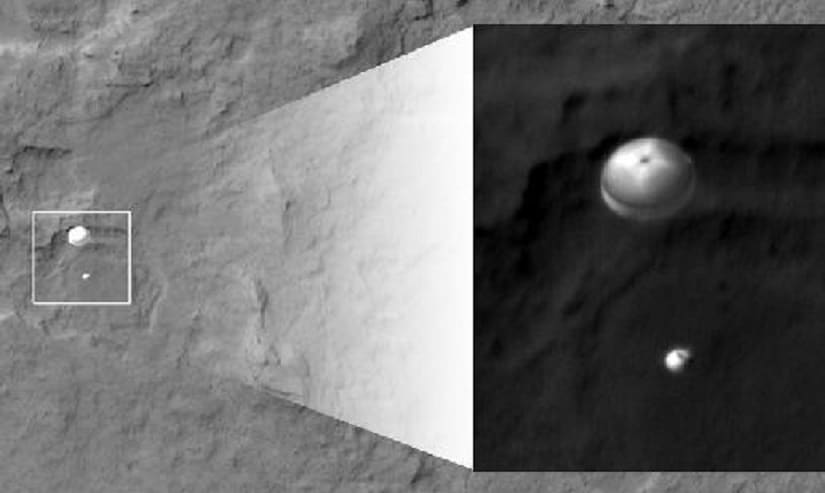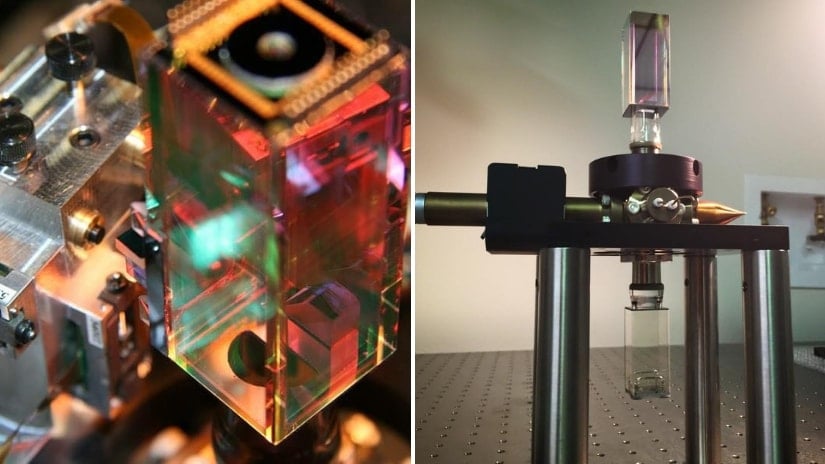Dr Anita Sengupta was one of the principal engineers who worked on the launch of the Curiosity Rover to Mars in 2011. Born in Glasgow to a Bengali father and a British mother, Dr Sengupta moved to New York where she was eventually raised. She completed her graduation in aerospace and mechanical engineering in 2000, and PhD in 2005 from Viterbi School of Engineering at the University of Southern California. Since then, she has worked on projects at some of the world’s most prestigious institutions, including NASA and the Jet Propulsion Laboratory. Dr Sengupta will be delivering a lecture on Space Engineering and Exploration at the Dr Bhau Daji Lad Museum on Sunday, 24 March. In an email interview with Firstpost, she talked about her work and journey. Below is an excerpt from the interview: *** When and how did you become interested in space exploration? As a small child, I watched Star Trek with my father, who was a Mechanical Engineer trained at IIT Bombay. I knew that I wanted to be involved with the exploration of space and I wanted to be an engineer, like my father. As a woman of colour, what was the journey like, from being a student to an expert? It is and was not easy. I had to be better and stronger, to be able to keep pushing ahead. My mother taught me there is no such word as ‘can’t’ and to never give up on your dreams. [caption id=“attachment_6308251” align=“alignnone” width=“825”]  Dr Anita Sengupta.[/caption] What is the representation of Indians, and more so Indian women, in the field of aeronautics and aerospace engineering? There are not many women in aerospace or Indian women in aerospace. So it is hard to find role models at work who are like you. But I found many mentors about 10 years into my career at NASA, mainly men, who wanted to help me and teach me. They believed in me and wanted to see women be successful in the field. What are your views on the Indian space sector? Do you see it emerging as one of the formidable research centres in the world when it comes to aerospace engineering? I am a big supporter of ISRO and am very impressed by their accomplishments, especially the MOM [Mars Orbiter Mission]. It makes me very proud as an Indian person, so see such tremendous success. I think that from launch vehicles to missions to Mars, to the surface of the moon, ISRO is going to be the next giant in the government-funded space sector. I hope to work with ISRO one day, as a private sector player, and enhance international collaboration between the US and India in this area. As part of your PhD research thesis, you worked towards improving NASA’s 30-cm ion thruster technology. Could you explain to us what it entailed? Ion engines are a type of plasma thruster. They are very efficient, over an order of magnitude more efficient than tradition chemical thrusters. The challenge in using them is that they are low thrust devices which means they are mostly operated over many thousands of hours to provide the needed energy transfer to obtain the desired orbital trajectory. My thesis work was to improve the way in which the plasma (ionised gas) was made to improve electrical efficiency and reduce the amount of wear inside the engine. My research at NASA, for which I won several awards, was incorporated into the design of the engines for NASA’s Dawn Mission, launched in 2007, and has now visited Vesta and Ceres, an asteroid and a protoplanet respectively in the main asteroid belt. It is very satisfying to see your PhD work put to direct use in the exploration of our solar system. The Mars Curiosity mission is a milestone in your career. What were the highs and lows during the journey? I led the development and the qualification of the supersonic parachute, a key technology for landing the rover on the surface during the “seven minutes of terror” as it is called. It took myself and my team over five years to design and test the system to ensure it would be strong enough to withstand an aerodynamic load of over 65,000 pounds [289.12 kN] — on a device that only weighs 100 lbs. [caption id=“attachment_6308191” align=“alignnone” width=“825”]  Images of NASA’s Curiosity Rover landing on the surface of Mars. Facebook/ Dr Anita Sengupta[/caption] Your next project with NASA, the development of CAL at ISS, is again a major highlight. What have been the findings so far? Is it going to be an ongoing/ permanent component at ISS? I led NASA’s Cold Atom Laboratory (CAL) mission from its inception in 2012. My team and I created a laser cooling facility to make Bose-Einstein Condensates in Space, aboard the International Space Station (ISS) in a microgravity environment. We launched in 2018 and are now observing this as a state of matter at a temperature just above absolute zero. We hope to learn about the nature of superfluidity, superconductivity, and how to make and use quantum sensors in space. I was one of the very few women of colour project managers at NASA and trailblazed as a leader for women that come next. I led the design of the facility to be upgradable/repairable so it can be on the ISS for 5 years or more. I am also proud to have been able to continue the work of the famous Bengali scientist Satyendra Bose into outer space. [caption id=“attachment_6308221” align=“alignnone” width=“825”]  A close-up view of the Cold Atomic Laboratory (CAL) science cell, where the high precision optical glass refracts light. Facebook/ Dr Anita Sengupta[/caption] What was it like working and doing research at Virgin Hyperloop One? How is it going to shape transportation technology in the coming days? I was senior vice president of systems engineering and safety and mission assurance at a hyperloop technology company. With my NASA systems engineering and management training, I led the team in the first-ever systems architecture of a hyperloop and plan for human use certification. It is inherently a green technology as it can use renewable energy from the grid to power its vehicles. I think it is the future of ground-based transit over large distances. You are currently working on developing new-age eco-friendly solutions for transportation in smart cities. Could you elaborate on that? At the end of 2018, I decided to become an entrepreneur in aerospace. I am a co-founder and the chief product officer at Airspace Experience Technologies. We are an aerospace technology company, located in Detroit, looking to revolutionise urban aerial transit with the development of an eVTOL (electric vertical take-off and landing) tilt-wing aircraft. We are revolutionising the way aircraft are designed by using the industrial design and mass production capabilities and expertise of the automotive sector, right in the Motor City. We intend to be a disruptive technology in the traditional aerospace market by providing a more cost-effective, reliable, and lower carbon footprint urban air mobility solution to the market. We are about to raise our next round of capital next week and I am hoping to find ways to work with India on the development of our vehicle in the months ahead. I believe that changing our view of urban transit from two to three dimensions will reduce congestion, pollution, and improve the quality of people’s lives all over the world. We want to make green air travel affordable to everyone. [caption id=“attachment_6308181” align=“alignnone” width=“825”]  The ASX team is developing and building an electric vertical takeoff and landing (eVTOL) aircraft, the MOBi-One.[/caption] ASX Mission 2019 from Detroit Aircraft / ASX on Vimeo. Other than space exploration and research, what are your other areas of interest? I am also a pilot. So, I view ASX as my dream job — as an aerospace engineer being able to design an aeroplane from scratch. I am a snowboarder, scuba diver, sport motorcyclist, bicyclist, and runner. I am also a STEM (Science, Technology, Engineering and Mathematics) outreach advocate and professional public speaker. How do you create awareness about areas you think need attention in terms of the teaching of science and engineering in countries like India? I am a research associate professor of astronautics at USC where I teach the design of spacecraft and entry systems. I do a lot of public speaking all over the world and each time I come to India, I set up free public lectures at science centres, schools, and museums so I can share my journey and my passion, which is engineering and space exploration. I also use social media ( @Doctor_Astro) to provide insights and information to the public at large. I want young people to see scientists and engineers as role models and people to emulate. What would be your advice to aspiring scientists and space explorers in India? The sky is not the limit, only the beginning. You can accomplish anything you put your mind to with hard work, perseverance, and passion. If it was easy it probably wasn’t worth doing. And if it seems impossible — all the more reason to try and do it. On 24 March, Dr Sengupta will deliver a talk at Mumbai’s Dr Bhau Daji Lad Museum, as part of the museum’s monthly collaboration with the Academy of STEAM (formally brought into operation in 2018 at the National STEM Story Festival by ex-BARC physicist Prof AP Jayaraman emphasising the role of Arts as a binding energy between Science and Humanities).
Dr Anita Sengupta was one of the principal engineers who worked on the launch of the Curiosity Rover to Mars in 2011.
Advertisement
End of Article


)
)
)
)
)
)
)
)
)



